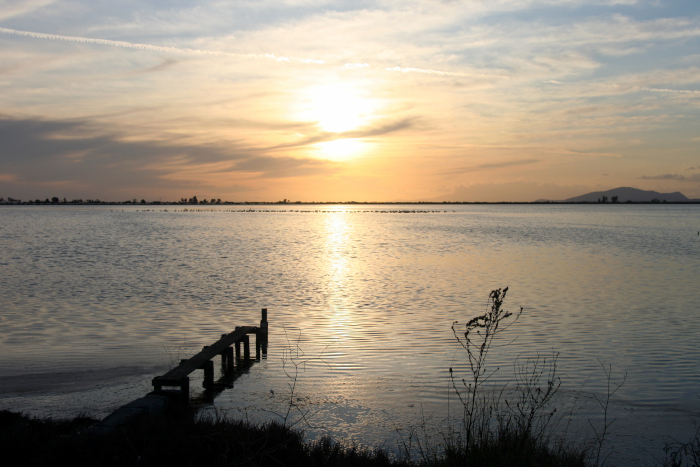MESSOLONGI
Messolonghi is mentioned for the first time in written sources in the 16th century. In 1700 it was under Venetian rule and then under Turkish rule. In the rebellion of 1770 (Orlovika) in which Messolonghi took part, it was looted and destroyed. After 1774 it was reorganized commercially and navally. From 1804-1820 it was under the authority of Ali Passas of Ioannina. It took part in the Greek revolution and suffered two sieges (1822 and 1825-26). The second siege was followed by the historic exodus of Messolonghi (10/4/1826), it remained under the rule of the Turks until 11/5/1829. In 1837 it was declared a holy city. It was repeatedly bombed during the Greco-Italian war and suffered significant damage.
The poet Dionysios Solomos called Messolonghi "Alonaki of freedom" for the sacrifice of its defenders, the holocaust of Kapsalis and the Heroic Exodus of April 10, 1826. Messolonghi went down in history as a City of Heroes.
NAFPAKTOS
Ancient Years
Nafpaktos is a city with a long history. It is said that it got its name from the word naus and pegnymi, which means building ships. For the first time it appears in 1104 BC. with the Dorians, who, in their descent, used Nafpaktos to build rudimentary ships (plans to be precise), so "Nafpaktos" also became a legacy.
The city originally belonged to the Esperius Locrus. In 454 BC the Athenians removed Nafpaktos from the sovereignty of the Locrians. Messenian families, who had been driven out by the Spartans, settled in the city. In the Peloponnesian war, Athens initially (429 BC) sent Phormion along with ships, while Sparta sent Knimos, who was finally defeated (Battle of Nafpaktos 429 BC). In 426 BC, at the urging of the city's Messenians, the Athenian general Demosthenes campaigned against the Aetolians. The Aetolians confronted them at Aigitium and forced him to retreat. The Spartan general Eurylochus, with the help of the Esperian Locrians, led by Amfissa, advanced to Nafpaktos. In 369 BC after the defeat of the Athenians at the Aigos rivers, the Messenians leave the city and depart for Sicily. Nafpaktos comes back under the control of Lokre.
In 350 BC Philip II of Macedonia cedes the city to the Aetolians. From 338 BC the city becomes the center of the Aetolian Commonwealth, since the councils of the Commonwealth met in the city. And Nafpaktia was called Aetolia of Epictetus. After the wars with the Achaeans and the destruction of the city of Thermos, Nafpaktos essentially became the capital of Aetolia. In 191 BC the Romans, after besieging the city, lifted the siege by signing a truce with the Aetolians.
During the rule of the Romans it flourished due to its important position directly opposite the Peloponnese.
A colony of Nafpaktos was the island of Kea, which received its name from a hero of the city. From Nafpaktos, according to Pausanias, came the poet Karkinos, who wrote the poem Nafpaktia Epi, as well as the sculptors Menaichmos and Soidas. In the city there were many temples, such as those of Poseidon, Artemis, Aphrodite and Asclepius.
Byzantium and Medieval years
It was an important city of Byzantium, as it was a port for travelers to Italy and Constantinople. It belonged to the province of Hellas or Achaia. Its fortress was thoroughly repaired in the Justinian years, but in 553, the city was destroyed by an earthquake. It also suffered destruction from the raids of various peoples, such as the Slavs (6th - 10th century). At the time of Constantine VII Porphyrogenitus it became the capital of the Fifth Theme of Europe (Greece), while in the 10th century it merged with the Eighth Theme of Nicopolis and became the seat of the new one.
After the fall of Constantinople by the crusaders, the city became part of the Despotate of Epirus for about a century (1204-1294). In 1294 the Despot of Epirus, Nikephoros I Angelos Komnenos married his daughter and gave the city as a dowry to his son-in-law Philip, prince of Taranto. He fortified the city and minted coins. But later the city came under the territory of the state of New Patras and later by the Arvanite Buas Spata. At that time the city was called Epaktos or Epachtos by the Greeks, Neopad-Nepad-Lepad or Lepanto by the Franks.
It spent a period of Venetian rule from 1407 until it fell into the hands of the Turks in 1499. Then the castle of the city took its current form. In 1458 Mohammed II the Conqueror unsuccessfully besieged the city, which remained in the hands of the Venetians. Finally in 1499 Bayezid II with the Turkish fleet forced the Venetians to surrender the city to him. In 1571 the Naval Battle of Nafpaktos took place.
On July 24, 1687 it was again occupied by the Venetians for 12 years. Finally, with the Treaty of Karlovic, Nafpaktos, like the rest of Sterea, fell to the Turks.
Modern Times
In 1821 the inhabitants of the area took part in the Revolution. Business in the city began in May. The resistance of the Turks was successful and lasted for several years. On April 18, 1829, it was finally freed from the Turks, when Andreas Miaoulis blockaded the city's port and forced the Turks to surrender the fortress. When the conquerors left, they left behind a few Greek families who, in fact, came into confrontation with the Souliot families (Botsarai, Tzavelai, etc.), to whom the newly established Greek state had granted the Turkish mansions, as compensation for their contribution to the Struggle.
Editor: Fotini Anastasopoulou
